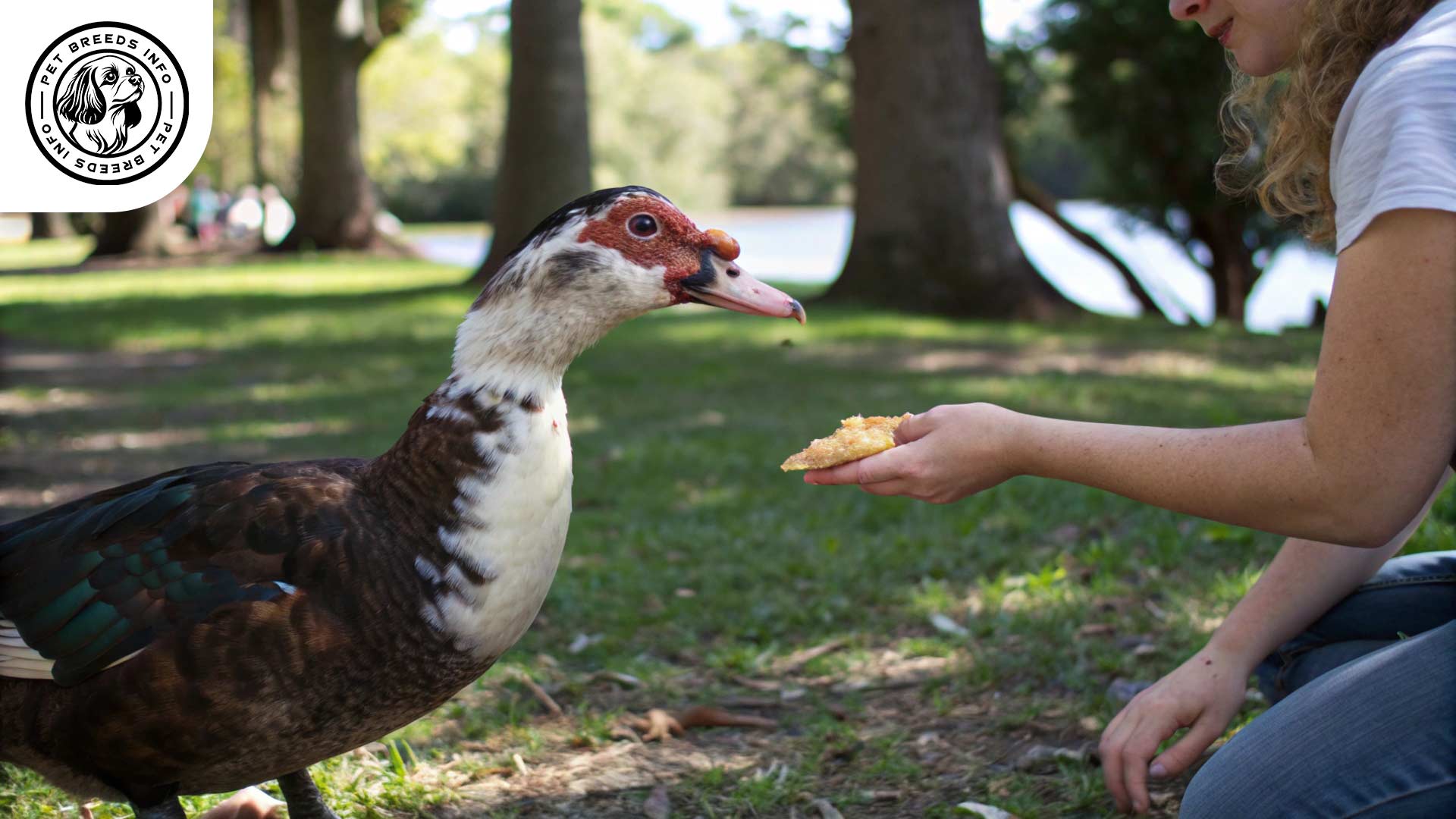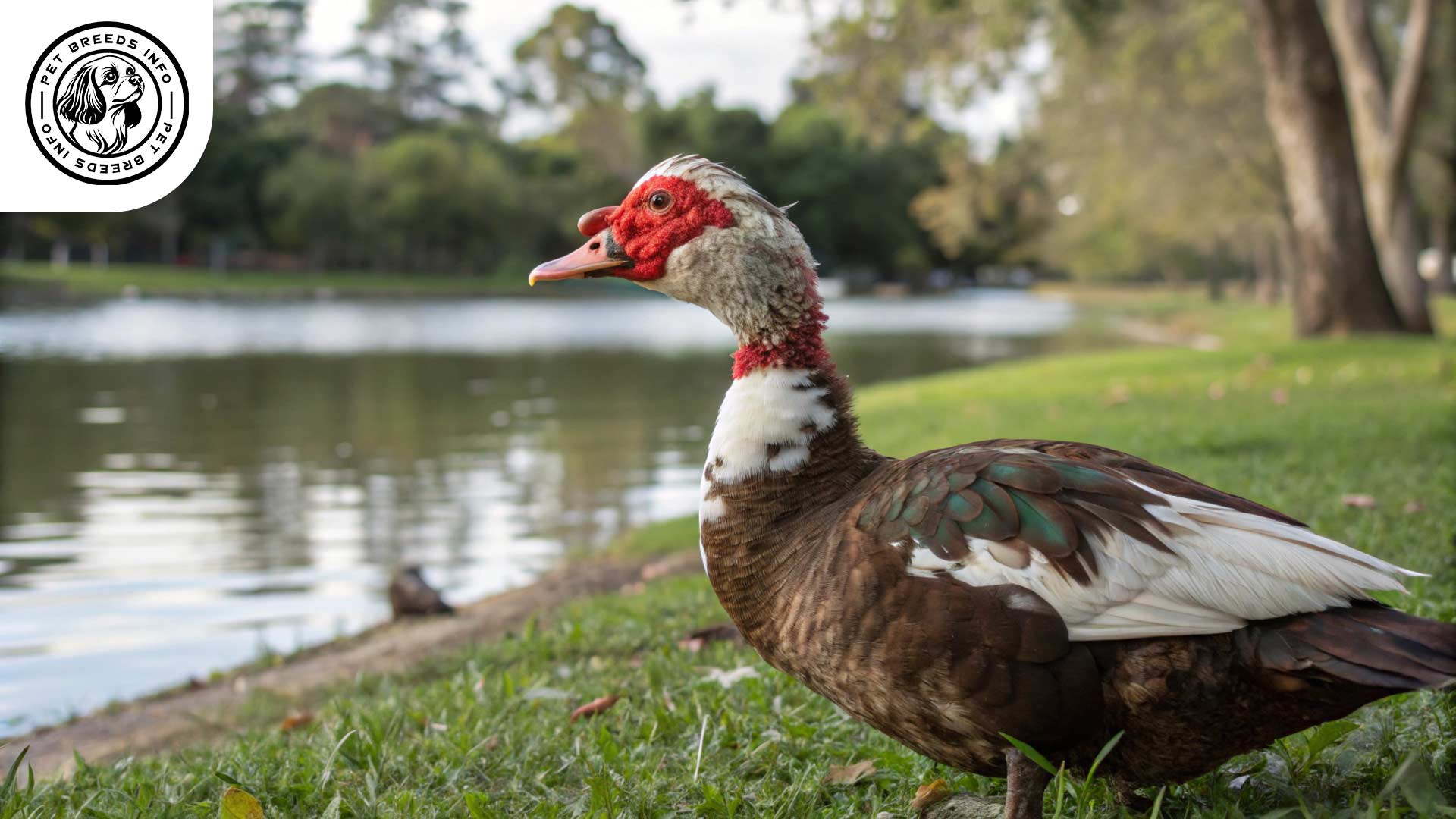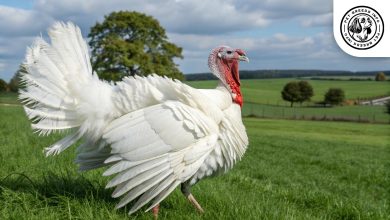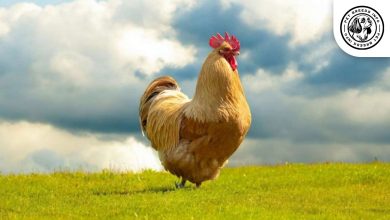Muscovy Duck Breed: Personality, Lifespan, Food & Care
General Introduction of the Breed
The Muscovy Duck (Cairina moschata) is a domesticated waterfowl native to Central and South America. It is also known as the Barbary Duck or Greater Wood Duck. Historically, the Muscovy Duck has been used for meat production due to its lean and flavorful meat. It is now found worldwide, both as a domestic and feral species.
Table of Contents
| Common Name | Muscovy Duck |
| Scientific Name | Cairina moschata |
| Origin | Central and South America |
| Size | 6–15 lbs (2.7–7 kg), males larger |
| Lifespan | 8–12 years |
| Primary Purpose | Meat production, pest control, ornamental |
| Temperament | Calm, independent, semi-social |
| Cold-Hardy | Moderately – needs shelter in cold climates |
Physical Characteristics
Muscovy Ducks vary in size, with males typically weighing between 10 to 15 pounds (4.5 to 7 kg) and females weighing around 6 to 8 pounds (2.7 to 3.6 kg). They have a unique appearance with red caruncles (fleshy growths) around their face and beak. Their plumage comes in several color variations, including black, white, blue, chocolate, and pied. The eyes are generally dark brown or black, and their tails are broad and fan-shaped.

Personality and Temperament
The Muscovy Duck is intelligent and adaptable, known for its calm and quiet nature. Unlike other ducks, it does not quack but instead communicates with hissing and cooing sounds. It is highly independent but can form strong attachments to its owner if hand-raised. While generally peaceful, Muscovy Ducks may display territorial behavior, especially during breeding season. They get along well with other ducks and poultry but may need space to establish their own area.
Care and Maintenance Requirements
Muscovy Ducks require access to outdoor space with a water source such as a pond or kiddie pool for bathing. They thrive in warm climates but can adapt to colder conditions with proper shelter. Their grooming needs are minimal, as they preen themselves, but regular access to clean water is essential for feather maintenance. Hygiene care includes keeping their living area clean and dry to prevent infections. Nail and beak trimming may be needed if they do not have access to natural wear surfaces.
Read More: Yorkshire Canary
Diet and Nutrition
Muscovy Ducks thrive on a balanced diet consisting of grains, vegetables, insects, and small aquatic creatures. High-quality waterfowl pellets supplemented with greens and protein sources like mealworms are recommended. They should avoid processed foods, salty snacks, avocados, and chocolate, as these can be harmful. A Muscovy Duck should be fed twice daily, with portion sizes depending on its age and activity level.

Health and Common Medical Issues
Muscovy Ducks are hardy birds but can be prone to conditions such as bumblefoot, respiratory infections, and parasite infestations. They require yearly veterinary check-ups and vaccinations against diseases like duck viral enteritis. Their average lifespan in captivity is 8 to 12 years, although some have been known to live longer with proper care.
Training and Behavior Management
Despite their independent nature, Muscovy Ducks can be trained to respond to food-based rewards and simple cues. Early socialization is key to ensuring they remain friendly and comfortable around humans. Gentle and consistent interactions help reinforce good behavior, while sudden or aggressive handling should be avoided.
Read More: Whiteface Cockatiel Bird
Interaction with Other Animals and Humans
Muscovy Ducks interact well with children when raised in a gentle environment. They can coexist peacefully with other farm animals but may establish a social hierarchy. While they enjoy human interaction, they do not require constant attention, making them suitable for owners who prefer a semi-independent pet.

Price and Availability
The cost of a Muscovy Duck varies based on age and breeding quality, typically ranging from $10 to $30 per duck. They are widely available through farms, feed stores, and waterfowl breeders. Prospective owners should ensure they purchase from reputable sources that prioritize proper breeding and health screening.
Read More: Hook Bill Duck
Conclusion and Final Thoughts
The Muscovy Duck is an excellent choice for those looking for a low-maintenance and environmentally friendly bird. It adapts well to various living conditions, provides natural pest control, and is known for its quiet and calm temperament. Potential owners should ensure they have adequate space and resources to care for this unique and fascinating breed responsibly.
FAQ
Do Muscovy Ducks quack like other ducks?
No, they are mostly silent and communicate through hissing and soft coos.
Can Muscovy Ducks live in colder climates?
Yes, but they require insulated shelter and dry bedding during winter.
Are they good with children?
Yes, when raised around people, they can be friendly and safe with kids.
Do they need a pond?
Not necessarily—a kiddie pool or large water dish is enough for bathing.
Can Muscovy Ducks be trained?
Yes, especially with food-based rewards and gentle, consistent handling.





